JavaScript this
当前执行代码的环境对象,在非严格模式下,总是指向一个对象,在严格模式下可以是任意值。(MDN)
this 指向的是当前的代码上下文环境,所以不同情况下的 this 指向也不同。
1. 全局下的 this
在全局环境下,this 指向全局对象。
全局对象和宿主环境相关,在浏览器下,全局对象就是 window 对象,在 node.js 中,全局对象是 global 对象。
window === this; // 输出:true
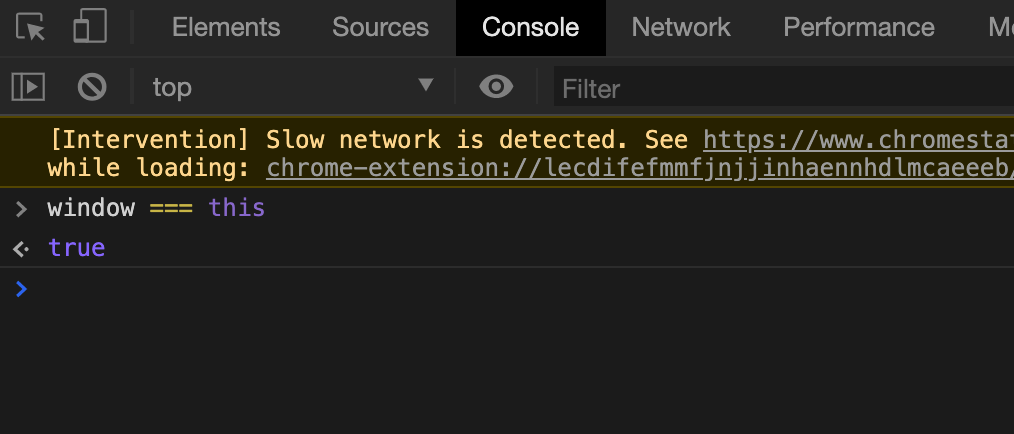
新的标准提供了
globalThis关键字来获取全局对象,这样就能抹平宿主的差异来操作处理全局对象了。
2. 函数中的 this
函数在不同情况下,其 this 的指向也不同。
2.1 对象下的方法
方法也是一个函数,如果通过对象调用一个函数,函数的 this 就会指向这个对象。
var person = {
age: 14,
name: '鸽子王',
skill: '放鸽子',
say: function() {
console.log('来一段自我介绍:');
console.log('我是' + this.name);
console.log('我今年' + this.age + '岁');
console.log('我最擅长' + this.skill);
},
};
person.say();
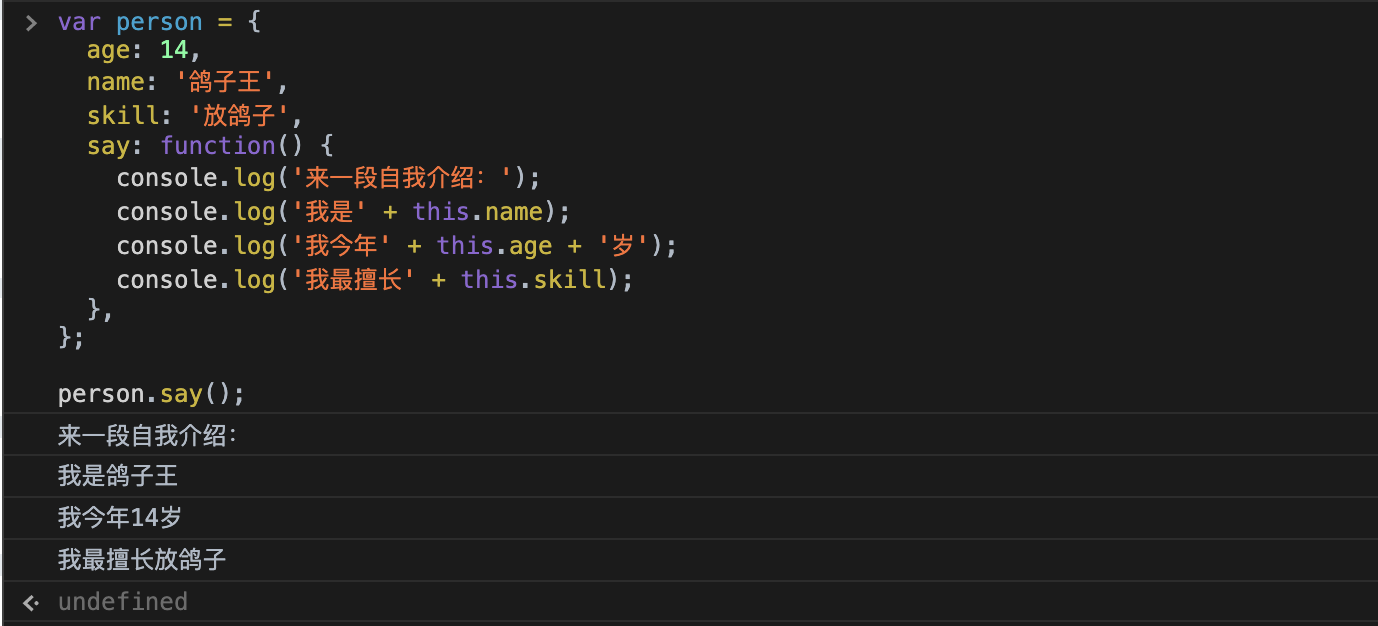
say函数作为对象下的方法,在被调用后,其 this 指向的是他所在的对象,在这里就是 person 对象。
2.2 原型链上方法的 this
原型链上的方法,this 指向的也是调用该方法的对象。
var __proto__ = {
sum: function() {
return this.number1 + this.number2;
},
};
var object = Object.create(__proto__);
object.number1 = 1;
object.number2 = 2;
console.log(
object.sum(),
); // 输出:3
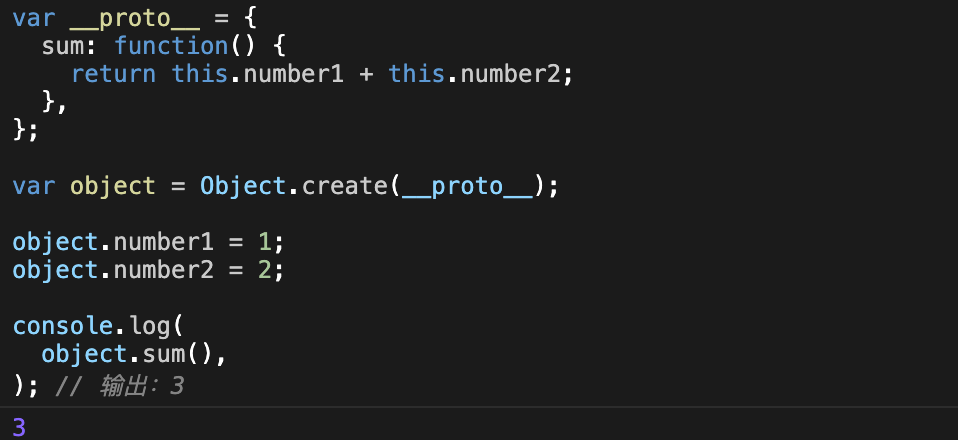
Object.create 做就就是将参数作为原型,创建一个对象。
所以 object 的第一原型就是 __proto__ 对象。
number1 和 number2 都是 object 变量的属性,但却可以被 sum 方法中的 this 访问到,所以在原型链的方法中,this 指向的就是调用该方法的对象。
2.3 getter / setter 下的 this
getter 和 setter 下的 this 也会指向调用该 getter 和 setter 的对象。
var object = {
_name: '鸽子王',
get name() {
return this._name;
},
set name(val) {
console.log(val);
this._name = val;
}
};
console.log(object.name); // 输出:鸽子王
object.name = '鸽子天王'; // 输出:鸽子天王
console.log(object.name); // 输出:鸽子天王
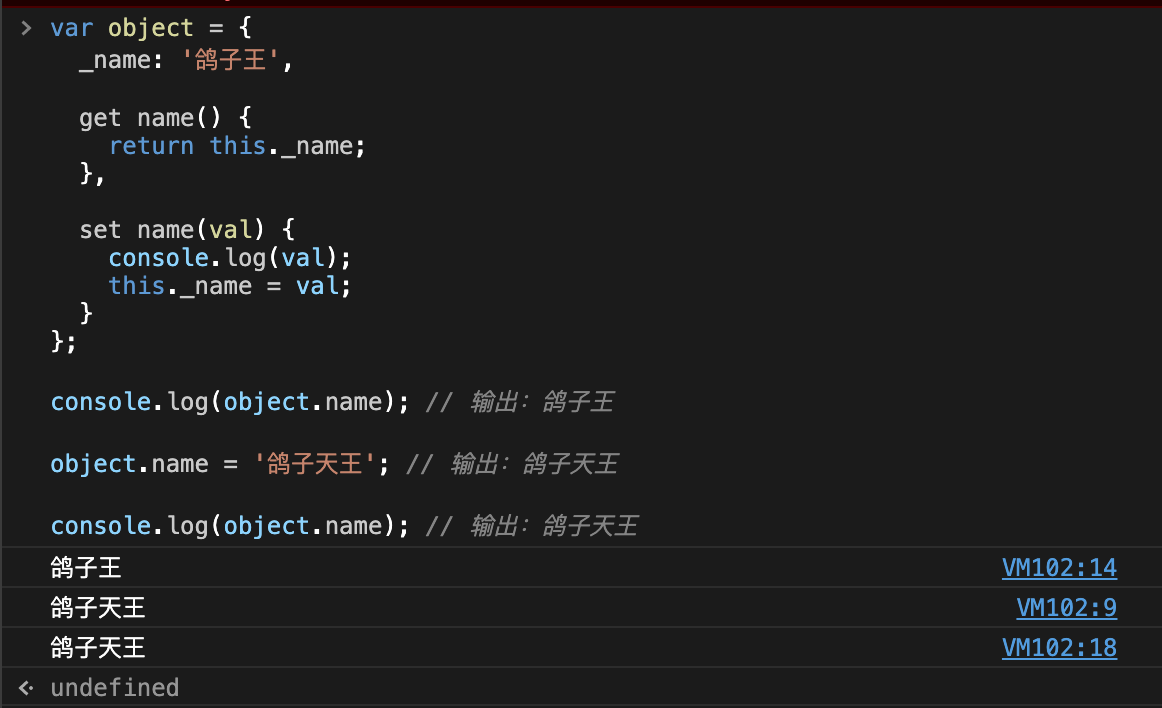
getter 和 setter 本质上也可以理解成两个函数,作为对象下的函数,在调用的时候 this 也会指向该对象。
2.4 作为 DOM 节点的事件处理器
作为 DOM 节点的事件处理器的时,函数的 this 会指向这个 DOM 对象。
<div>
<button>点击我</button>
</div>
<script>
document.querySelector('button').addEventListener('click', function() {
this.innerHTML = '被点击了!';
});
</script>

2.5 作为一个内联的事件处理器
内联的事件处理器,其 this 指向的是 DOM 节点自身。
<div>
<button onclick="console.log(this); console.log(this === document.querySelector('button'))">点击我</button>
</div>

这个规则有局限性,只有最外层的 this 符合这个规则。
<div>
<button onclick="function test() { console.log(this) }; test();">点击我</button>
</div>
test 函数的 this 指向的是全局对象 window。

2.6 其他大部分情况下
排开上述的几个情况,剩下的函数大部分情况下在调用时,this 指向的是全局对象,在浏览器中就是 window 对象。
function fn() {
console.log(this);
console.log(this === window);
}
fn();
这样调用函数,其 this 指向的就是 window 对象了。
有的时候可能会搞混以下情况:
var object = {
username: '咸鱼',
fn: function() {
console.log(this.username);
function thisTest() {
console.log(this.username);
console.log(this === window);
}
thisTest();
},
};
object.fn();

这里 thisTest 方法输出的 username 就会是个 undefined,因为他的 this 指向的是 window,因为他不属于 object 对象的一个方法,所以 this 就指向了 window。
在回调函数中经常会碰到这个问题:
var info = {
account: '123',
password: '456',
login: function(cb) {
setTimeout(function() {
cb({
account: this.account,
password: this.password,
});
}, 1000);
}
};
info.login(function(info) {
console.log(info);
});

这里回调函数获取的账号和密码是 undefined,原因就是 this 的指向问题。
通常会使用保留上层 this 的方式解决这个问题。
var info = {
account: '123',
password: '456',
login: function(cb) {
var _this = this;
setTimeout(function() {
cb({
account: _this.account,
password: _this.password,
});
}, 1000);
}
};
info.login(function(info) {
console.log(info);
});

这样就能解决这个问题。
另外一个情况也很容易混淆 this :
var object = {
user: 'no.1',
say: function() {
console.log(this.user);
},
};
var say = object.say;
object.say(); // 输出:"no.1"
say(); // 输出:undefined

这是因为把 object 下的 say 方法单独赋值给 say 变量的时候,其就作为了 window 下的一个方法,所以他的 this 指向的是 window。
在严格模式中,这种情况下的 this 会变成 undefined。
2.7 构造函数
在 JavaScript 构造函数也被成为 对象构造器,用于产生对象。
构造函数的声明和普通函数几乎没有区别:
function Point(x, y) {
this.x = x;
this.y = y;
}
var point = new Point(1, 2);
console.log(point.x); // 输出:1
console.log(point.y); // 输出:2
构造函数使用 new 关键字来构造对象。所以当一个函数被使用 new 关键字调用时,这个函数就会作为一个构造函数。
在一个构造函数被调用后,其内部的 this 会指向一个对象,具体的内容可以参考 构造函数 章节。
3. 修改this
3.1 call 方法和 apply 方法
函数具有 call 方法和 apply 方法,这两个方法可以在调用函数的时候指定函数的 this。
var object = {
user: 'no.1',
};
function say() {
console.log(this.user);
}
say(); // 输出:undefined
say.call(object); // 输出:"no.1"
say.apply(object); // 输出:"no.1"
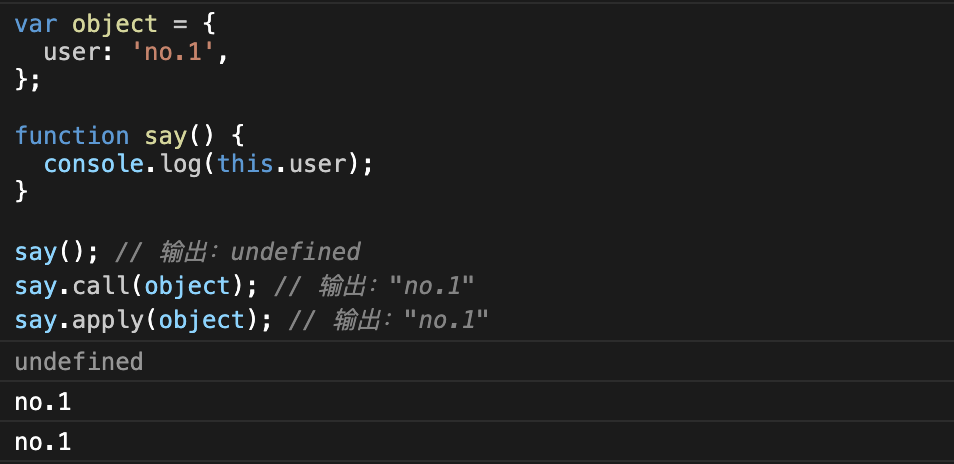
通过 call 和 apply 方法将 say 函数执行时候的 this 设置为 object 对象。
call 方法从第二个参数开始,表示是要传递给当前函数的参数。
var object = {
user: 'no.1',
};
function fn(arg1, arg2, arg3) {
console.log(
this,
arg1,
arg2,
arg3,
);
}
fn.call(object, 1, 2, 3);
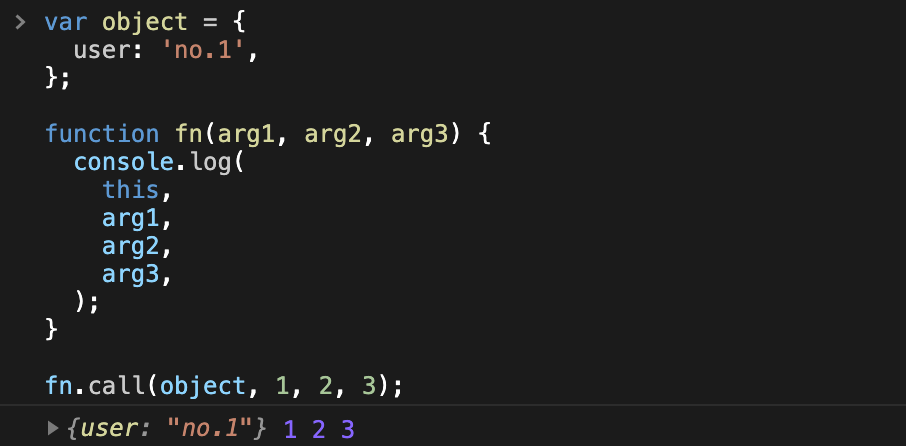
apply 的第二个参数是个数组,数组里面的项会按数组的顺序作为参数传递给函数。
var object = {
user: 'no.1',
};
function fn() {
console.log(
this,
arguments,
);
}
fn.apply(object, [1, 2, 3]);
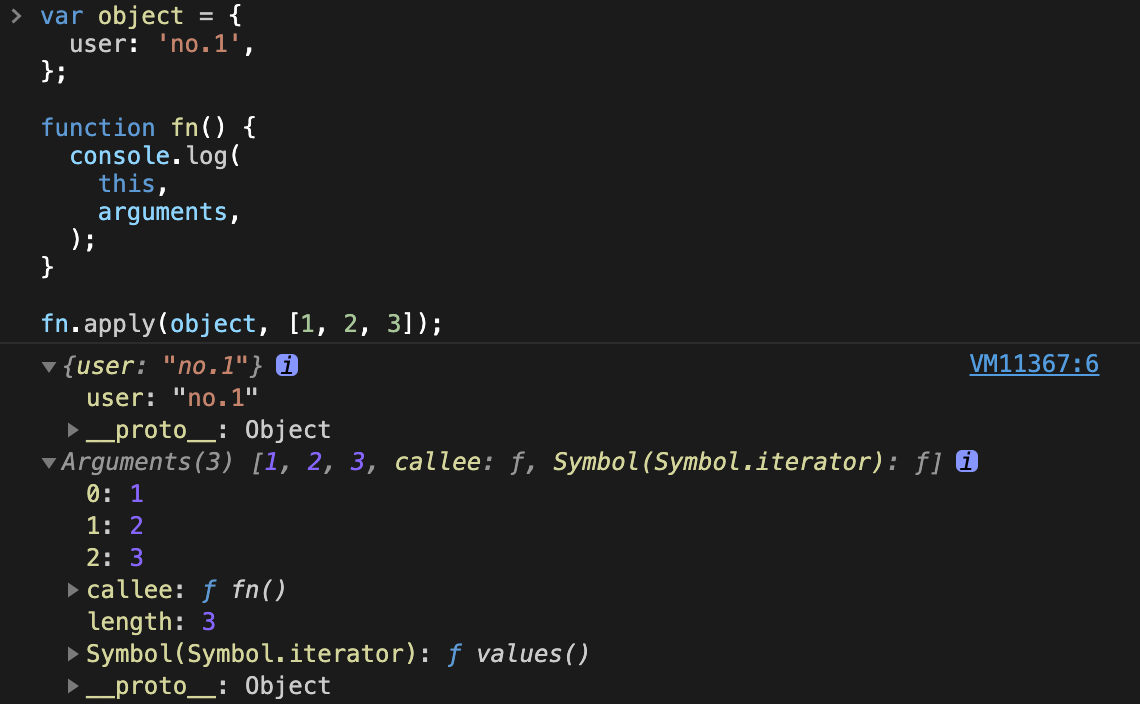
通过 arguments 关键字就可以看到当前函数的参数,通常在需要修改 this ,又不确定参数的情况下,会使用 apply 来修改 this。
3.2 bind
bind 方法用于给一个函数永久绑定一个指定的 this,bind 不会修改原函数,会返回一个新的函数。
var obj1 = { value: '今天打砖' };
var obj2 = { value: '明天打转' };
var fn = function() {
console.log(this);
};
var bindFn1 = fn.bind(obj1)
var bindFn2 = bindFn1.bind(obj2);
bindFn1();
bindFn2();
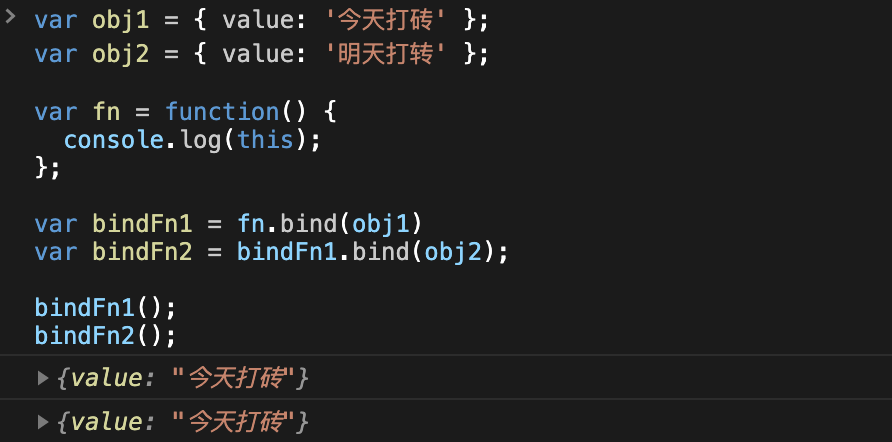
可以看到 bindFn1 被绑定了 obj1 作为 this,之后不论怎么操作,他的 this 都会是 obj1。
bind 还有更多灵活的用法,参数也可以绑定,有关 bind、call、apply 这三个方法的更详细的信息可以查阅对应的文档。
4. 小结
理解好 this 的处理机制可以设计出更加完善的 JavaScript 应用程序。
this 在 ES6 的箭头函数中的表现也有所不同,可以查阅 ES6 中有关箭头函数的内容。

































































 然冬 ·
然冬 ·
 2025 imooc.com All Rights Reserved |
2025 imooc.com All Rights Reserved |